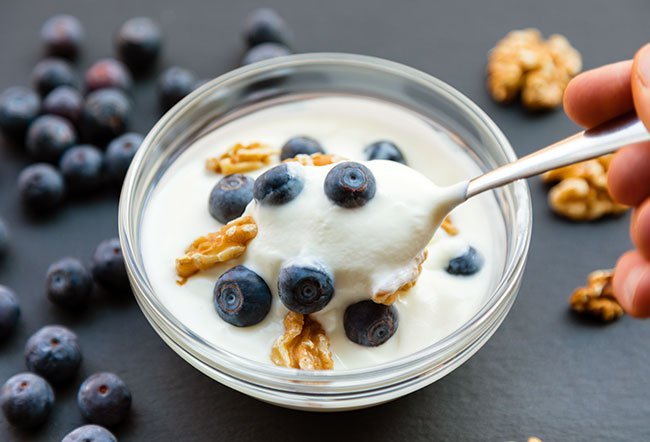
Teenagers are often hungry and need extra energy to survive puberty. Positive role models in food and messages about healthy eating can help adolescents adopt healthier eating habits. You should also avoid some of the most unhealthy eating habits among teenagers. These include poor planning and restrictive eating habits, excessive food intake, and undereating. This time of life is important for nutrition and provides extra nutrients to the body.
Children who have healthy eating habits are less likely develop eating disorders like anorexia. Children can talk to their parents about the benefits of eating a healthy diet when they are young. Avoid imposing strict diets on children as they may become more demanding. Instead, parents should talk with their children about the benefits of eating fruits & vegetables and emphasize the importance choosing nutrient rich foods.
Kids love to be involved with food preparation. Participating in mealtimes with your children can foster an interest in food and encourage healthy eating habits. Encourage your children to explore as many foods as possible by limiting their use of electronic devices for at least one hour before they go to the kitchen. Drink plenty of water and try to avoid sweets and soda. Do not stress about a messy dining table. It will eventually bore your child.
Binging is another unhealthy eating pattern. Overeating is one of the most common ways people eat. It's when you eat large quantities of food in a single sitting. The idea behind bingers is to eat till you are satisfied. To avoid binging, bingers can practice eating smaller meals throughout the day to reduce their chances of getting hungry. This will help them regain control of their food intake and lose weight. It will also help them lose the fear of gaining weight.
Sharing meals with friends and family can be beneficial to overcoming unhealthy eating habits. Individuals tend to eat faster and consume more food if they're distracted. This can lead to eating too much. Additionally, eating with others allows us to spend more time thinking and focusing on the food. This makes it less likely that we feel rushed or overeat.

Apart from unhealthy eating habits, children's nutritional requirements can differ significantly. The hunger needs of newborns are not always the same. As they grow older, however, their nutritional needs will change. It is vital to watch your child's eating habits, and help them make healthier choices. This can help them to make healthy decisions. It is important to remember that healthy, balanced meals are more likely for a child to succeed.
Eating when you are tired, bored, or anxious can cause a unhealthy relationship with food. It is important that you make healthy choices and don't overeat. It is important to make healthy choices and avoid eating out of routine. It is important to avoid food when you feel anxious or stressed. Despite your best intentions, you should also avoid foods that are high in fat and high in sugar. You will enjoy better nutrition and fewer calories.
Healthy food should be available in every room of your home. This will allow you to eat healthier and avoid bad eating habits. Avoid social events where you are likely to come across food you are afraid of. Take along healthy snacks and small meals to share with your friends when out. This will help you avoid the temptation of overeating. You should also avoid junk food.

It is important to avoid snacking throughout the day. Do not let your child eat excessively if it isn't necessary. By limiting snacks, you'll ensure that he/she doesn't crave for food when he or she's hungry. Similar to their parents, children will copy their parents' eating habits. Avoid making your children unhappy about their eating habits. This will help them develop healthy eating habits as a result of their parents' behavior.
FAQ
What are basic cooking skills?
Basic cooking skills include the ability to read recipes and measure ingredients. This is the first step to learning how to cook. Cooking can be a great way of saving money, as you don't need to go out to eat all the time.
Can you learn to cook on your own?
Yes, you can be a self-taught cook! Cooking is one of those things that everyone loves doing, whether they know how to do it or not. Start cooking at home if you want to learn how to cook. You can start small by making spaghetti sauce for dinner or pancakes for breakfast. It is important to experiment with new recipes to learn how to cook. You might make a few errors along the way.
Cooking can take anywhere from a few hours to several months depending on the skill level. Cooking is more than following recipes. There are many ways to cook food. If you have an idea, follow it.
How do I become a Chef?
There are many options for becoming a chef. You can begin by taking a course at a community college or vocational school. You can then look into going to culinary school. Finally, consider a paid internship.
How much does it cost to study Culinary Arts?
You will find that the price to study culinary arts is variable. For example, a four-year degree typically costs around $40,000. A two year associate's degree might cost less than $5,000. Tuition rates vary depending on what program you choose. Prices for tuition are higher in private institutions than they are for public ones.
What are the advantages of using a slow cooker to cook?
Slow cookers are extremely useful as they make it easy to cook delicious meals in a short time. Slow cooker recipes are more healthy than traditional dishes because they use less oil. Slow cooker recipes are also convenient as they can take care of themselves while your sleep.
Statistics
- The median pay for a chef or head cook is $53,380 per year or $25.66/hour, according to the U.S. Bureau of Labor Statistics (BLS). (learnhowtobecome.org)
- You'll be amazed that over 90% of CIA students receive scholarships and grants to finish their culinary studies. (ischoolconnect.com)
- In the United States, the category is estimated at $23.2 billion annually and is growing faster than the market. (washingtonpost.com)
External Links
How To
How to make an omelet that is perfect
Omelets are one of my favorite foods to eat at breakfast. How do you make them perfect? Many different recipes and methods have failed to work for me. Today, I'd like to share some tips with you in order to make delicious and fluffy omelets every day.
It is important to know that eggs can be temperamental when making omelets. You must get them fresh, organically, and keep them cold until you cook. You must keep them cool enough to allow the whites to form properly and the yolks to become too runny if they're not kept at the right temperature. Your omelets will look strangely colored if this happens. If you intend to cook your eggs immediately, it's best to use room-temperature egg.
Another tip is to separate your egg before adding it into the pan. You don't want the white to get mixed with the yolk, as this could cause the egg to curdle.
If you add the egg directly onto the stovetop, you might end up burning the bottom part of the egg, which would ruin the texture of your omelet. Instead, put the egg in the microwave for 10 seconds before putting it into the pan. The microwave heat cooks the eggs just right without overcooking them.
Next, let us talk about how to mix the eggs. When mixing eggs, it is important to thoroughly beat them. To do this, take the bowl from the mixer and flip it upside-down. Next, shake the bowl vigorously. This allows the air to be whipped and the egg to be mixed thoroughly.
Now comes the fun part - pouring the milk into the mixture. First, pour half of the milk into the beaten eggs and then fold the eggs gently into the remaining milk. Do not be alarmed if there are still egg streaks visible. Once the omelet flips, these streaks will disappear.
After folding the eggs fold the pan onto medium heat. When the oil starts to hot, wait for the pan to cook. Once the oil begins to heat, add 1/4 cup butter and swirl the pan to coat it. Open the lid and sprinkle salt on the pan. An additional pinch of salt will prevent the omelet form sticking to your pan.
Once the omelet has formed, cover the pan again and wait for the top side to set completely. Flip the omelet upside down or with a spatula. Cook the other side for about a minute. Remove the omelet from the pan and serve immediately.
This recipe works best when you use whole milk.